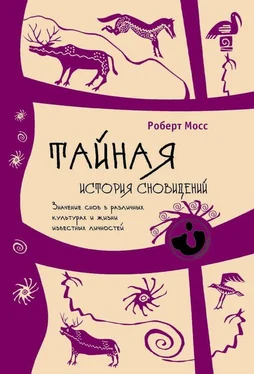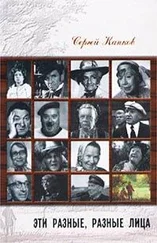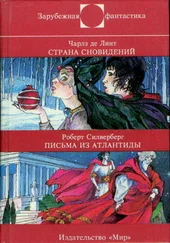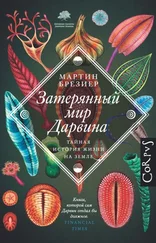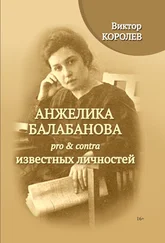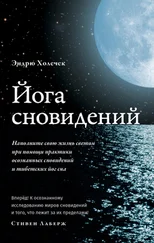Я отношусь к совпадениям как к «тайному рукопожатию вселенной», и не сомневаюсь в том, что именно одно из таких совпадений привело меня к моему настоящему редактору Джорджии Хьюго и ее замечательным коллегам из «Нью Уорлд Лайбрари». Джорджия – прекрасный редактор; она способна увидеть все лучшее, что может предложить автор, и оказывает неустанную поддержку во время творческого процесса.
Мои дочери помогли мне вспомнить о том, что для того, чтобы получить доступ к воображению, мы всего лишь должны позволить своему внутреннему ребенку играть с нами. Я выражаю глубочайшую благодарность своей жене Марсии, великолепному другу и советчику. Она увидела структуру и содержание этой книги за двадцать лет до того, как я приступил к ее написанию, сев за необычный письменный стол – стол, на самом деле оказавшийся дверью – созданный ею после того, как я рассказал об одном из своих снов.
Введение. Области сновидений
[1] Kasia Maria Szpakowska, “The Perception of Dreams and Nightmares in Ancient Egypt: Old Kingdom to Third Intermediate Period” (PhD diss., University of California, Los Angeles, 2000), pp. 23–26.
[2] Petru Popescu, Amazon Beaming (New York: Viking, 1991), p. 60.
[3] T. J. Knab, A War of Witches: A Journey into the Underworld of the Contemporary Aztecs (New York: HarperCollins, 1995).
[4] Roger Ivar Lohmann, Dream Travelers: Sleep Experiences and Culture in the Western Pacific (New York: Palgrave Macmillan, 2003), p. 6.
[5] Robert Moss , Dreamways of the Iroquois: Honoring the Secret Wishes of the Soul (Rochester, VT: Destiny Books, 2005), pp. V, 105–106.
[6] “My Platonic Sweetheart”, in Tales of Wonder , ed. David Ketterer (Lincoln: University of Nebraska Press, 2003), pp. 117–126.
[7] Winston Churchill, Thoughts and Adventures (1932; reprint, London: Odhams Press, 1949), p. 189.
[8] Natalie Angier, “Modern Life Suppresses Ancient Body Rhythm”, New York Times , March 14, 1995.
[9] A. Roger Ekirch, “Sleep We Have Lost: Pre-Industrial Slumber in the British Isles”, American Historical Review 106 , no. 2 (April 2001): 343–386.
[10] Paul Bohannan, “Concepts of Time among the Tiv of Nigeria”, Southwestern Journal of Anthropology , no. 9 (Autumn 1953): 253.
[11] London Gazetteer and New Daily Advertiser , February 11, 1769, cited in Ekirch, “Sleep We Have Lost, p. 373.
[12] Thomas Middleton, “The Black Book”, in The Works of Thomas Middleton , ed. A.H. Bullen (New York: AMS Press, 1964), 8:14.
[13] Британский исследователь Марк Солмс в своей работе с пациентами, перенесшими травму головного мозга, получил доказательства того, что возможность видеть сны появляется также во время других фаз сна, когда активируются высшие зрительные и эмоциональные центры мозга. Согласно выводам Солмса, даже те люди, которые имеют повреждения ствола мозга или зрительной коры, продолжают видеть сны. См. G. W. Domhoff, “Refocusing the Neurocognitive Approach to Dreams: A Critique of the Hobson versus Solms debate”, Dreaming 15 (2005): 3–20.
[14] Charles J. Limb and Allen R. Braun, “Neural Substrates of Spontaneous Musical Performance: An fMRI Study of Jazz Improvisation”, Public Library of Science Journal 3 , no. 2 (February 2008): 1–9.
[15] Tore A. Nielsen and Philippe Stenstrom, “What Are the Memory Sources of Dreaming?” Nature 437 , no. 27 (October 2005): 1287.
[16] Ibid., p. 1287.
[17] Roger M. Knudson and Gillian M. Finocan, “What I Learned Teaching Dreams 101 – a Cautionary Tale”, Dream Time (Fall 2007): 13. Издание «Время сновидений» ( Dream Time ) публикуется Международной ассоциацией по изучению сновидений.
[18] Edward Hallett Carr, What Is History? (New York: Random House, 1961), 9.
Глава 1. Глашатаи Земли и путешественники между мирами
[1] Marina Roseman, Healing Sounds from the Malaysian Rainforest: Temiar Music and Medicine (Berkeley: University of California Press, 1993), pp. 52–53.
[2] Jürgen Riester, “Curandreros y brojos de los indios chiquitanos”, Revista de la Universidad Boliviana “Gabriel René Moreno) 16 , no. 31–32 (1972): 5–17. Народом чикитано (маленьким народом) называется группа людей, живущих в восточной Боливии и на плато Мату-Гросу, которая была объединена усилиями иезуитских миссионерских организаций в XVII веке.
[3] Norman E. Whitten Jr., Sacha Runa: Ethnicity and Adaptation of Ecuadorian Jungle Quichua (Urbana: University of Illinois Press, 1976), pp. 58–59.
[4] Nancy Connor and Bradford Keeney, eds., Shamans of the World (Boulder, CO: Sounds True, 2008), p. 46.
[5] Walter Bogoras, “Ideas of Space and Time in the Conception of Primitive Religion”, American Anthropologist , n.s., 27, no. 2 (April 1925): 208–209.
[6] Michael F. Brown, “Ropes of Sand: Order and Imagery in Aguaruna Dreams”, in Dreaming: Anthropological and Psychological Interpretations , ed. Barbara Tedlock (Santa Fe, NM: School of American Research Press, 1992), p. 157.
[7] Irving A. Hallowell, Culture and Experience (Philadelphia: University of Pennsylvania Press, 1955), p. 178.
[8] Sigmund Freud, Introductory Lectures on Psychoanalysis , trans. Sydney Walker (London: Penguin Books, 1991), p. 231.
[9] Sylvie Poirier, “This Is Good Country, We Are Good Dreamers: Dreams and Dreaming in the Australian Western Desert”, in Dream Travelers: Sleep Experiences and Culture in the Western Pacific , ed. Roger Ivar Lohmann (New York: Palgrave Macmillan, 2003), pp. 112, 115.
[10] Hovard Morphy, Journey to the Crocodile’s Nest (Canberra: Australian Institute of Aboriginal Studies, 1984).
[11] Fiona Magowan, “Syncretism or Synchronicity? Remapping the Yolngu Feel of Place”, Australian Journal of Anthropology (December 2001).
[12] Jeremy Naydler, Shamanic Wisdom in the Pyramid Texts (Rochester, VT: Inner Traditions, 2005).
[13] Robert Moss, Dreamgates: An Explorer’s Guide to the Worlds of Soul, Imagination, and Life beyond Death (New York: Three Rivers Press, 1998), pp. 284–290.
[14] E. A. Wallis Budge, Osiris: The Egyptian Religion of Resurrection (New Hyde Park, NY: University Books, 1961).
Читать дальше
Конец ознакомительного отрывка
Купить книгу
